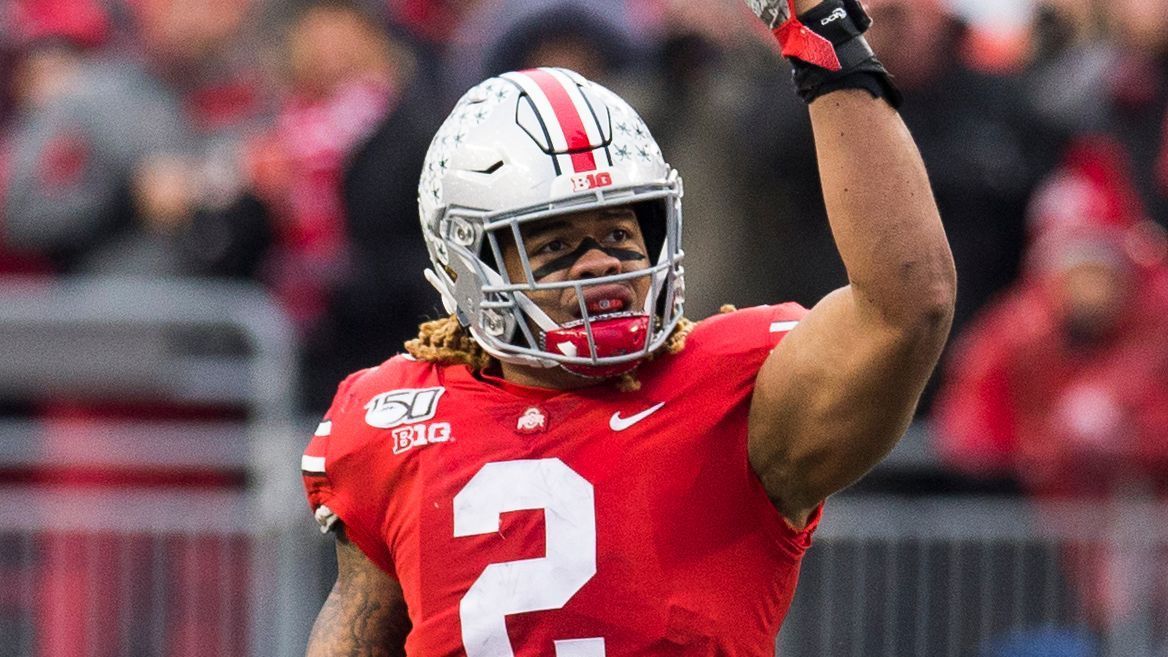ASHBURN, Va. — The Washington Redskins should stay put, select Ohio State defensive end Chase Young and move forward with no regrets. Then again, the Redskins need more than one player to turn the roster around and could get a haul in return for the second pick.
This is a debate that will go on until the draft.
And whichever direction they take, it’ll shape their franchise for the foreseeable future. One talent evaluator summed it up this way: If they believe Young can be a transcendent player, they take him.
But with multiple teams in the top 10 needing a quarterback, and with either LSU’s Joe Burrow or Alabama’s Tua Tagovailoa available at No. 2, a big return could be available.
Such was the case in 2012 when the Redskins traded the sixth overall pick plus two future first-rounders and a second-rounder to St. Louis for the No. 2 overall pick. They drafted quarterback Robert Griffin III, who had a terrific rookie season before being plagued by injuries and was released after the 2015 season. The Rams didn’t pick anyone that made a memorable impact with their haul.
Unlike this season, however, there was no defensive player considered to be better than the quarterbacks — as some have said about Young.
When the Redskins consider trading or staying put, here are other moves they should review:
2014
The move: Cleveland traded the No. 4 overall pick to Buffalo in exchange for the ninth pick plus first- and fourth-round picks in 2015.
What the Browns did: Well, they Browns-ed. By trading, they passed on linebacker/end Khalil Mack and ended up with cornerback Justin Gilbert at No. 8 (after another trade). With their 2015 picks, they selected lineman Cam Erving and safety Ibraheim Campbell.
The lesson: More isn’t always better. Gilbert is out of the league; Campbell is with Green Bay, his fifth franchise; Erving was traded to Kansas City for a fifth-round pick. He, at least, became a starter for a Super Bowl champion. Even if he had stayed in Cleveland and became a solid starter, that’s not a great return considering these were the others available at No. 8: linebacker Anthony Barr, receiver Odell Beckham Jr. and defensive lineman Aaron Donald. The Redskins have had a better drafting record the past three years, so this isn’t the best comparison.
2016
The move: Cleveland traded the No. 2 pick plus a conditional fifth-rounder to Philadelphia in exchange for No. 8 pick plus choices in the third and fourth rounds, a first-rounder in 2017 and a second-rounder in 2018. Tennessee traded the No. 1 pick, but with young quarterback Marcus Mariota already on the roster, it made sense. The Browns had a bigger choice to make because they needed a quarterback.
What the Browns did: They turned the No. 8 pick into the 15th and 76th in a trade with Tennessee. They selected receiver Corey Coleman at 15. He, along with the other four picks acquired in the first three rounds of this draft, are no longer with Cleveland. The Browns traded the 2017 first-rounder — the 12th overall — to Houston in exchange for the 25th pick and a 2018 first-rounder. So in two drafts they passed on quarterbacks Carson Wentz and Deshaun Watson. With the 2017 first rounder they picked safety Jabrill Peppers and in 2018 they took corner Denzel Ward.
The lesson: Again, more isn’t always better. In the end, the Browns had 14 picks in 2016 and only two players are currently on their roster from that draft. They used some of the other picks as ammo for further trades — Peppers was a key part in them acquiring Beckham. But they also twice passed on legitimate starting quarterbacks. Given the Browns’ track record, their failures shouldn’t serve as a reason why other teams must stay put.
2018
The move: Indianapolis traded the No. 3 pick to the New York Jets in exchange for No. 6, two second-round selections and a 2019 second-round pick.
What the Colts did: They passed on pass-rusher Bradley Chubb. But at No. 6 they picked guard Quenton Nelson, a first-team All-Pro in each of his first two seasons. With the first of their second-round picks, they picked Braden Smith, who has become a quality starting right tackle. They traded the second of their Round 2 picks to the Eagles, dropping back three spots and picking up a fifth rounder. With those, they selected end Kemoko Turay, who has 5.5 sacks in two years but missed 12 games last season because of an injury, and running back Jordan Wilkins in the fifth. He’s been a backup.
The lesson: Good trades can be made. The Colts got an elite lineman and a quality starter. Turay remains an intriguing player. The Colts appeared to be happy with getting either Chubb or Nelson at No. 6. When you have multiple players you like and anticipate one will be available, trading back becomes a no-brainer.
2019
The move: San Francisco stayed put at No. 2.
What they did: Select defensive end Nick Bosa.
The lesson: Don’t overthink a situation. In fairness, there wasn’t much clamoring for that second pick because the quarterback class didn’t warrant two top picks. Had Arizona passed on Kyler Murray, and selected Bosa, then the 49ers could easily have traded back. Still, Bosa was the widely considered best player in the draft. He’s clearly made an impact, helping turn around the 49ers’ defense, which ranked first in passing yards allowed per game (11th last year); third in sacks per pass attempt (23rd) and second on third downs (21st). In 2017, the Niners did trade the second pick to Chicago — but they only moved back a spot and still selected the defensive player they would have taken at No. 2 (end Solomon Thomas).
